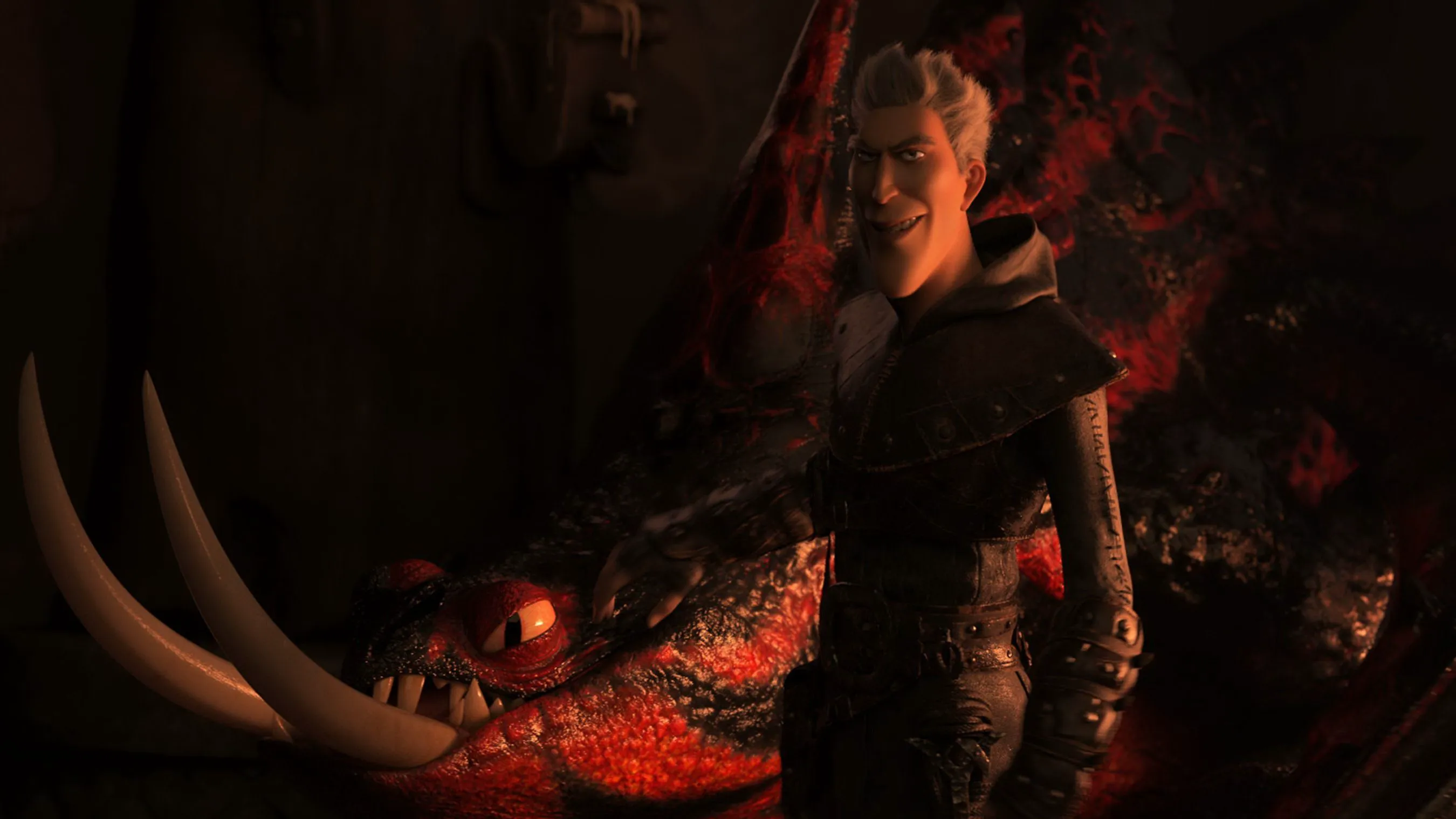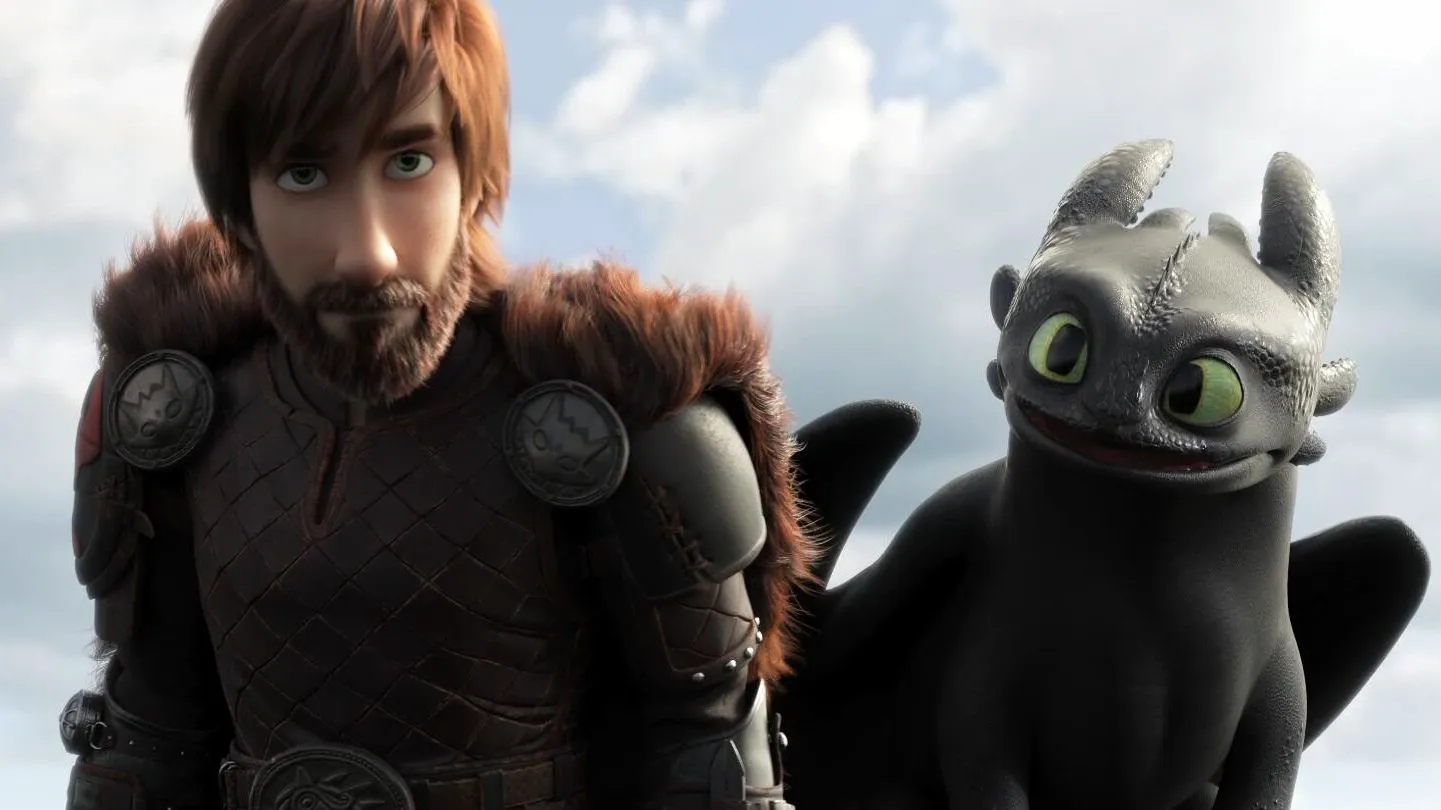How to Train Your Dragon: A Farewell to a Beloved Saga
With the release of How to Train Your Dragon 3, an era comes to an end, marking the conclusion of a franchise that has been with us for nine years. As the final chapter, DreamWorks Animation doesn’t focus solely on tying up loose ends. While the film revisits elements from the previous two installments, it primarily delivers a complete story about growth and maturity.
As Hiccup and Toothless rescue more and more dragons from dragon hunters, tensions rise between them and the dragon hunters of Berk. To protect the rescued dragons, Hiccup faces the challenge of finding them a safe haven. Meanwhile, Toothless falls in love. These accumulating issues lead Hiccup to make a crucial decision: to leave Berk and seek out the legendary Hidden World. However, this is merely the backdrop; the heart of the story lies in the personal growth of Hiccup and Toothless.

A scene from “How to Train Your Dragon 3,” highlighting the deep bond between Hiccup and Toothless.
In essence, this is a film that doesn’t rely on suspense or plot twists. Everything unfolds naturally, like a seasoned performer who captivates the audience with just a single word.
This is where DreamWorks Animation excels, but it can also be seen as a limitation. Unlike its rival, Disney Animation, which often presents adapted classic fairy tales with characters driven by a sense of purpose, DreamWorks stories often lack this inherent sense of mission. For instance, in the first two How to Train Your Dragon films, if Hiccup had rescued less formidable dragons, he might not have become the chieftain of the Viking tribe. He might have ended up like his mother, abandoning her husband, son, and people to live with dragons.
The Power of Character Interaction
DreamWorks Animation compensates for this by focusing on frequent interactions between the main characters, offering more complete and detailed portrayals. In the first How to Train Your Dragon, a significant portion of the film is dedicated to the interactions between Hiccup, Toothless, and Astrid. For example, when Toothless rescues Astrid and places her on the ground, he makes sure to set her upright before facing the villain. This simple scene demonstrates the creative team’s attention to detail in character interactions, a trend that continues and expands in the third film.
In this context, Toothless’s identity as a dragon serves more as a backdrop. He could easily be replaced by a lion or tiger without significantly altering the story. This is why this type of film works best as an animated feature.

A scene from “How to Train Your Dragon 3,” depicting a less-than-intimidating villain.
The Weakness of Villains
The emphasis on character interaction diminishes the importance of the villains. The simplistic, childish, and stereotypical portrayal of antagonists is a recurring issue throughout the How to Train Your Dragon trilogy. Often, the villain’s sole purpose is to fulfill the narrative requirement of having an antagonist, lacking depth in motivation or thought process. In other DreamWorks Animation films, the absence of a villain wouldn’t be a major issue. However, DreamWorks, with its highly developed film industry, ensures that all necessary elements are present, resulting in a complete, albeit predictable, story.
A Familiar Ending
Should we criticize this seemingly cliché ending? From a viewer’s perspective, we often just want a good story.

A scene from “How to Train Your Dragon 3,” showing Hiccup and Toothless reunited after years apart.
Just as in the film, Hiccup and Toothless are destined to separate and reunite. Like long-lost friends, they part ways to pursue their individual growth, only to reunite, forever young at heart.